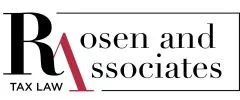Exploring the Taxpayer Relief Program: Eligibility, Application, and Considerations
The ability to settle tax debts can be hindered by various circumstances, yet the Canada Revenue Agency (CRA) imposes high interest rates and penalties, posing challenges for taxpayers striving to resolve their liabilities promptly. In response, the Taxpayer Relief Program aims to alleviate these burdens under specific conditions. This article will explore the Taxpayer Relief Program, including the eligibility requirements, application process and avenues available for taxpayers to navigate their tax affairs effectively.
Overview of the Taxpayer Relief Program
Rooted in the principles of fairness, the Taxpayer Relief Program assists taxpayers in resolving financial difficulties without enduring penalties or interest charges. This program not only mitigates financial hardships but also fosters compliance and trust within the tax system. Under this program, penalties and interests can be waived, and in some circumstances, refunds may be issued.
Eligibility for The Taxpayer Relief Program
The Taxpayer Relief Program considers four primary categories of qualifying circumstances.
- Extraordinary Circumstances
This category includes, but is not limited to, natural or human-made disasters such as a flood or fire, civil disturbances or disruptions in services such as a postal strike, serious illness or accident, and serious emotional mental health issues such as a death in the immediate family, which prevent the timely payment of taxes. Extraordinary circumstances experienced by an authorized representative, or third party can also prevent one from meeting their tax obligations and may be considered by the CRA. However, the taxpayer is generally considered to be responsible for errors or delays made by their representative or third party.
- CRA Errors
This category pertains to situations where delays or errors made by the CRA result in a taxpayer's inability to pay taxes on time or file accurate returns, leading to unwarranted penalties or interest.
- Inability to Pay or Financial Hardship
This includes situations where paying the owed amount would result in financial hardship, making it difficult to afford basic necessities such as food, housing, or transportation. When it is confirmed that the taxpayer is unable to pay what is owed, the CRA may waive or cancel interest, in whole or in part, to allow the taxpayer to pay the debt. Notably, this category is applicable to businesses as well when paying the interest owed to the CRA would jeopardize the business's ability to continue to operate, putting the employment status of employees at risk, or harming the welfare of the community as a whole.
- Other Circumstances
Lastly, the CRA has "catch all" category for other circumstances which may still warrant relief, however, these are considered on a case-by-case basis.
Notably, eligibility for relief is determined based on specific circumstances and will be evaluated individually.
Applying to the Taxpayer Relief Program
Navigating the application process requires meticulous preparation. Applicants must present a detailed request to the CRA, outlining reasons for seeking relief, relevant dates, and supporting documentation. Examples include medical reports, evidence of natural disasters, proof of CRA errors, or financial statements depending on the circumstances.
Moreover, the application must specify the penalties or interest from which relief is sought and highlight any prior attempts to resolve the issue.
Ten Year Limitation Period
The CRA will consider a request only if it relates to a tax year or fiscal period ending in any of the preceding ten calendar years before the year in which you made a request. Similarly, interest requests are limited to amounts accrued within the same timeframe.
Exclusions from Relief
Certain penalties and interest falling outside the ten-year period, taxes assessed under ineligible legislative authority, and administrative charges are not eligible for relief under the program. For example, the GST/ HST, and gross negligence penalties charged under section 285 of the Excise Tax Act are not eligible for relief. Finally, administrative charges such as bank chargeback fees are not eligible for relief.
Other Avenues when Taxpayer Relief is Not an Option
Remission Orders
In limited circumstances, remissions provide full or partial relief from federal tax, interest, penalties or other debt paid or payable under legislation administered by the CRA. A remission order may be considered where relief is warranted but can't be achieved under any other tax laws, through an assessment, or through other actions.
Objections
When the Taxpayer Relief Program is not a viable option, taxpayers could dispute the assessment or reassessment by filling a Notice of Objection.
Voluntary Disclosure Program
Taxpayers could also make a Voluntary Disclosure to fix errors or omissions of a previously filled return or file a missing return. For more information, please see Understanding Voluntary Disclosure: A Guide for Canadians (rosentaxlaw.com).
Conclusion
Understanding the Taxpayer Relief Program's criteria, application process, and limitations is crucial for individuals and businesses navigating tax challenges. By comprehensively exploring these aspects, taxpayers can effectively utilize this program to achieve equitable solutions.
The content of this article is intended to provide a general guide to the subject matter. Specialist advice should be sought about your specific circumstances.



